
SHAH ALAM: Armada 2017 will be held at the Lumut naval base as part of the navy’s 83rd anniversary, from the 28th to 30th April.
Apart from ship’s visit there will be static displays and live demonstrations throughout the three-day event.
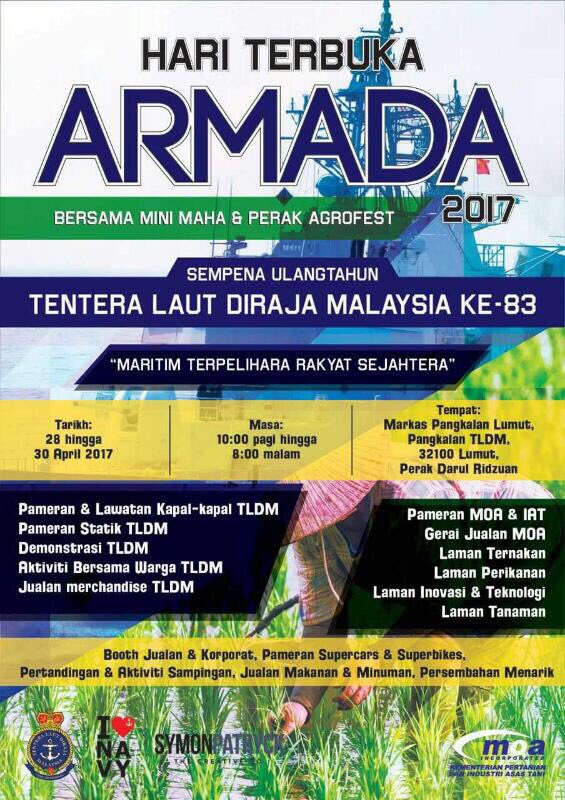
RMN has not announced the name of the ships that will be open for visits but it is likely that the frigates, KD Jebat, KD Lekiu, KD Lekir and KD Kasturi, will among the ships involved, if they are not on operations.
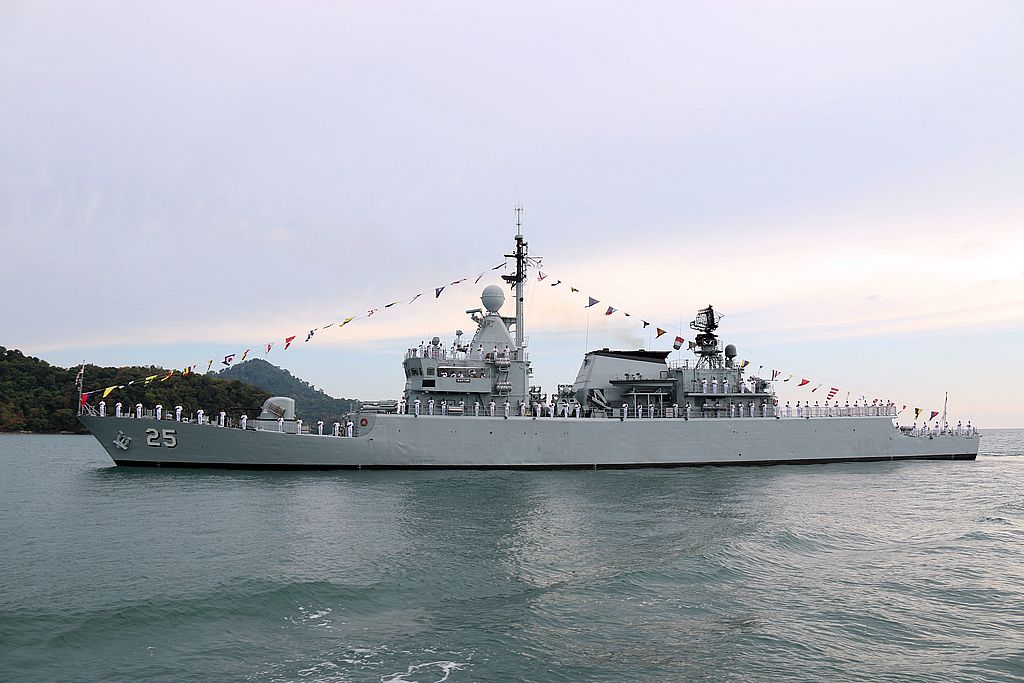
Other ships like KD Mahamiru, KD Inderasakti and even training ship, Gagah Samudera are also likely to be open to the public. KD Hang Tuah, the grand dame of the fleet will also see its 50th-anniversary celebrations held at the same time.
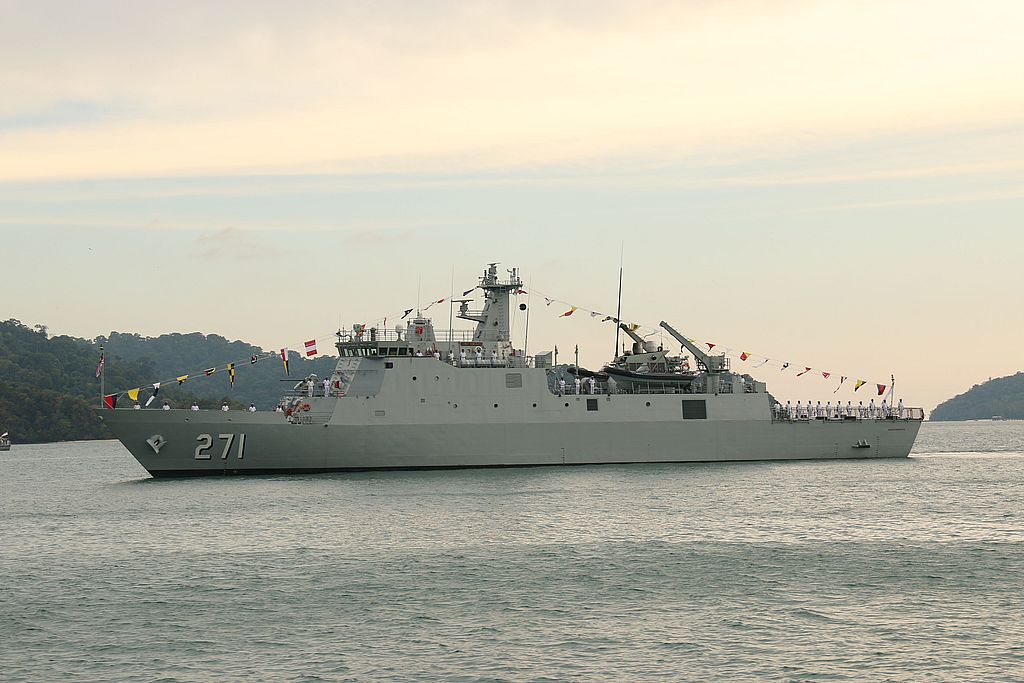
The event will be held from 10.30am to 8 pm. The Fleet Open Day will be held together with mini-MAHA and Perak Agrofest 2017.
— Malaysian Defence
If you like this post, buy me an espresso. Paypal Payment

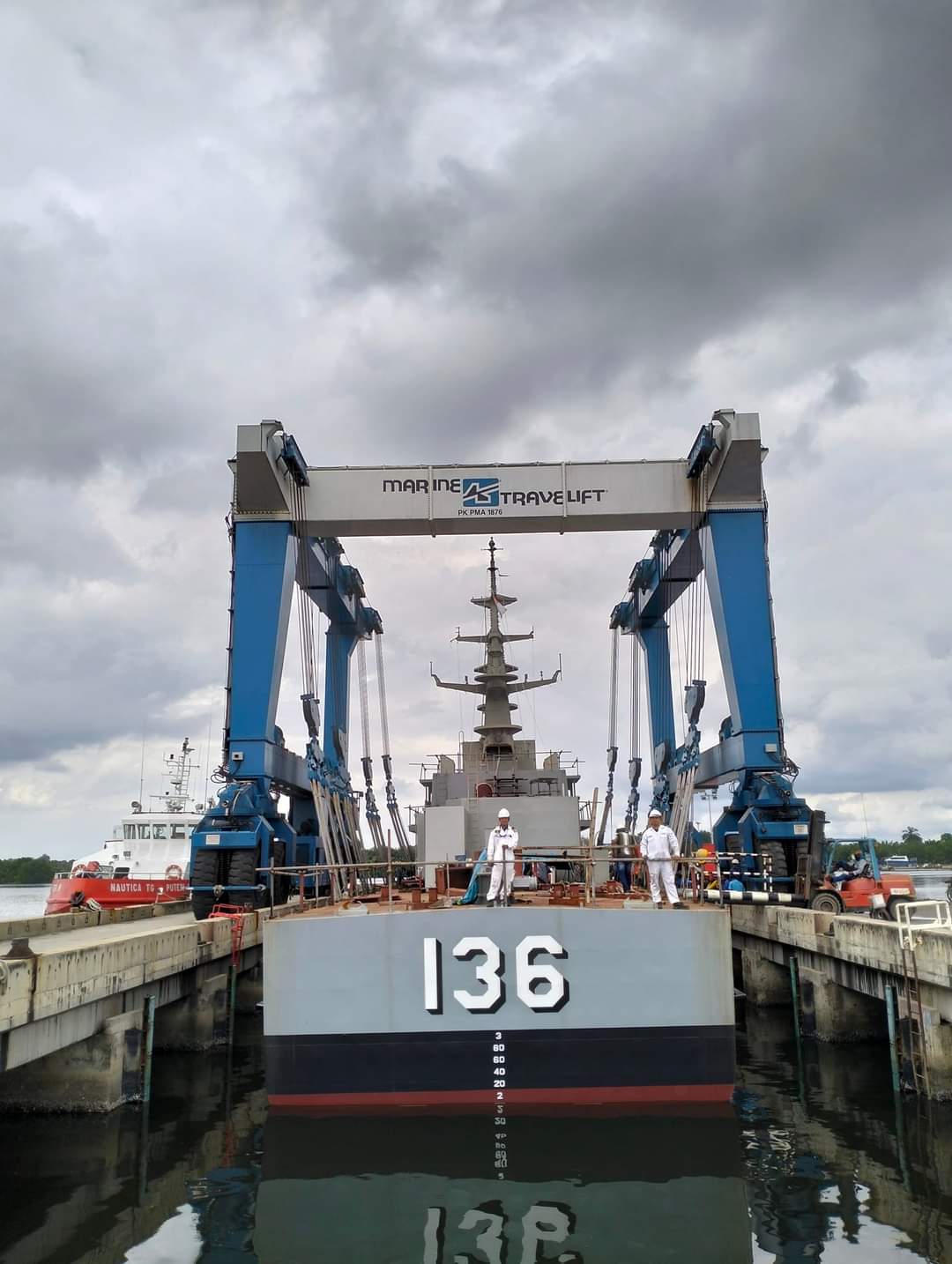

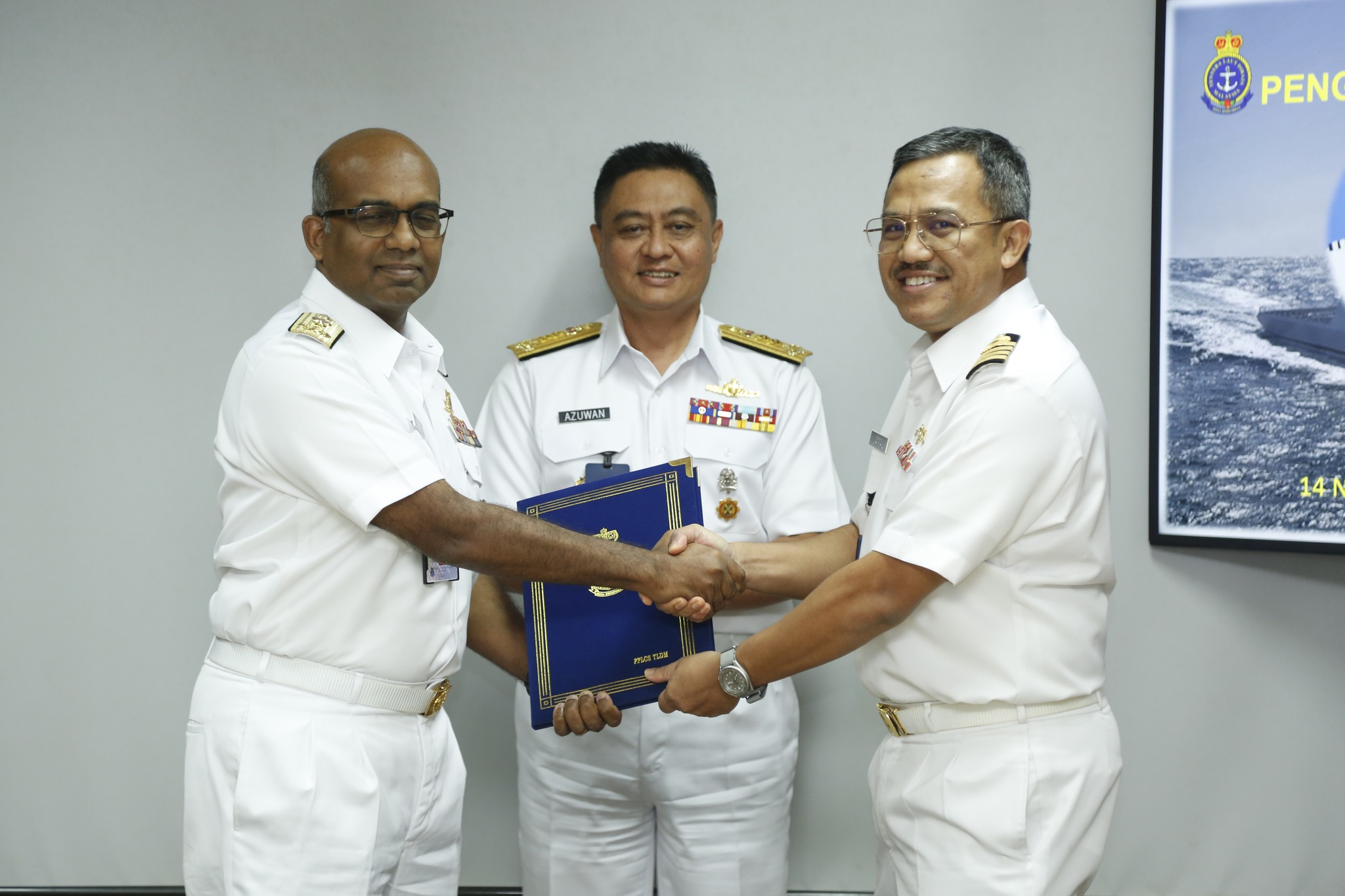
You will visit Lumut for Armada 2017, Marhalim? Y’know, to gather more info about our navy’s procurement programme? 😛
Reply
Unlikely too many people for this kind of event.
Surely that’s one of the first pics of the Gagah Samudera with the RMN? Nice lines on her. From a distance she looks like a scaled down Lekiu..
Reply
It was taken during the fleet review at Lima, she does look purposeful
Actually Marhalim, there has been much said about the LCS’s SAM ie VL Mica rather than ESSM, but nothing at all about its ASW and anti-surface warfare capabilities. From the sounds of it, the NSM is pretty impressive and has capabilities exceeding Harpoon and Exocet. Also, Captas seems to be state of the art and the Royal Navy’s S2087 is actually a Captas 4. Do you have any idea if the torpedoes on the LCS will be the Mu90?
Submarines are a new fear and anti-submarine capability is very important in the future. The Australian Navy wants their $ 35 billion future frigate class (to replace Anzac class) to have an exceptional anti-submarine capability. Everyone fears what they can’t see. It’s like Donald Rumsfeld’s ‘known unknowns’. We know there are subs out there but we have no idea on numbers and what they are doing.
Reply
Well, as for submarine being a new fear it was already confirmed back in WW1 and WW2, something old is new again. I will write something about the missiles and torpedoes soon.
Tom Tom,
Mines……..
Mines are cheap to buy, are operated in large numbers by almost everyone, require almost zero maintenance, have a long shelf life, are hard to detect and can be laid by even 40 foot trawlers.
How effective NSM [or any other missile] will be will depend largely on the ships’s sensors and its SA. The best missile will account for nothing if the ship can’t detect a target in time or for that matter, if the target has th ability to ”confuse” the missile’s seeker. .
To talk about how effective the LCS will be as an ASW platform we have to look not only at the towed array in isolation but other things as well; such as whether the LCS will have a bow mounted sonar to complement the towed array. There is also the question of the helo; range and endurance is everything and a helo loaded with fuel will also have to carry torps. Having the ability to detect and fix a contact at long distance is great but the helo must also have enough range and endurance to persecute the target. Landing on a rolling and moving deck is never easy; in very bad weather the ability of a helo to take off and land will be affected. As for the LCS’s on board torps; bear in mind that if a contact is within range of the ship’s torps; the ship is also well within range of being fired upon by a contact.
For an effective ASW system in south china sea.
The south china sea is basically an enclosed body of water that have a few deep diving areas for a submarine to really dive to its maximum diving depth. Most of the submarine players in the area is also known, Vietnam with 6 Kilos, China and Malaysia with 2 Scorpenes.
The future ASW capability of the 6 Gowinds, and any additional SGPV with ASW systems should be adequate. Variable depth towed sonars would be useful in very small deep areas of the sea, mostly around the spratlys and off sabah. Towed sonars are of course normally paired with a hull sonar, but we have not heard of the type of hull sonar to be paired with the Captas3 on the gowind, the usual suspect would be the Thales Kingklip sonar. The execution part where the ASW helicopters are the one that is still has a big question mark. What kind of helicopters would it be, would it be fitted with dipping sonars or sonobuoys, what kind of torpedoes would it be armed.
Indeed it is a big question mark. As I’ve pointed out before a main issue with the Lynx/Super Lynx is not only the lack of space but adequate power supply. No doubt issue relating to power supply would have been rectified with the Wildcat but fitted with ASW gear it’s still a very tight fit and range and endurance will be an issue. Ideally the LCS would have a larger helo. On paper the ASW capability of the LCS is no doubt ”adequate” but unfortunately in reality things could be different. There is also the question of how much time will be dedicated to ASW during training/exercises; a problem not only we face.
One is reminded of how during exercises Aussie and Norwegian boats managed to penetrate the protective screen of a carrier and get close enough for a torp kill and that’s in deep waters where conditions are more ideal compared to a littoral environment. There also the case of the PLAN Ming managing to evade the kitty Hawk’s protective screen and surfacing in close vicinity to the carrier in 2007.
Costs of ASW helicopters are quite high
AW159 Wildcat around usd55million (philipines navy)
MH-60R seahawk around usd75million (denmark)
As565 dauphin around usd30million (indonesia)
What do you think about having fixed passive sonar systems around the malaysian eez in south china sea?
…….,
At choke points and ”sensitive” areas yes but it would cost and arm and leg to buy and maintain. given the current threat environment justifying funds for it could be an issue. Rather than underwater sensors IMO the cash would be better spent on the primary radars and gap fillers that the RMAF has long had a requirement for. Bear in mind that via the intel arrangement under the FPDA and RAAF
P-3 deployments; we do get access to some info we otherwise wouldn’t get.
For rmaf, their priority as we know is in the cool toys.
So what minimum asw capability should we have? Do we still see ASW capable MPAs as a capability we should have? My opinion is no. If the mpa asw capability is just a token effort. I see the fixed sonar arrays as something like the ESM but for underwater arena. No idea what would it costs but should be similar to a ship mounted version? But without the vibration and noise from the base ship.
I would advise going to see the ships as some are slated for retirement. Although that is some years away, the navy does not hold open houses every year. For some vessels, it might be the last chance to view and board.
Unfortunately, the FACs won’t be there; being based in Kuantan and Sepanggar. I’ve had the privilege to board almost every RMN ship class but never the FACs or for that matter the PCs.
off topic
Most of the used US MkV boats that is not taken up by Malaysia, is already on the way to Bahrain and Greece. 5 to Bahrain (total of 7 now for Bahrain), 4 to Greece.